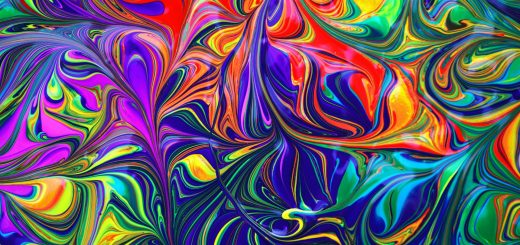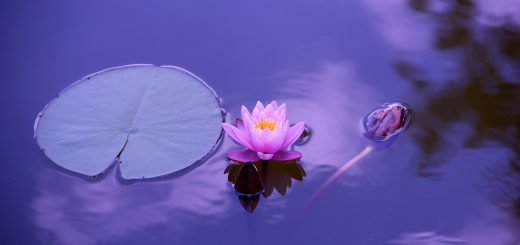Wildlife Observation: Binoculars Guide

TRANSLATE BUTTON AT THE END OF THE ARTICLE
Introduction to Wildlife Observation
Wildlife observation is a fascinating activity that allows individuals to connect with nature and observe animals in their natural habitats.
Whether you’re a seasoned wildlife enthusiast or a beginner looking to explore the wonders of the natural world, binoculars are an essential tool for enhancing your wildlife watching experience.
Binoculars enable you to get up close and personal with animals without disturbing them, providing you with a unique perspective on their behavior and interactions.
Importance of Binoculars in Wildlife Watching
Binoculars play a crucial role in wildlife observation by magnifying distant objects, making it easier to spot and identify animals in their natural surroundings.
They allow you to observe wildlife from a safe distance, minimizing disturbance to the animals and ensuring a more authentic viewing experience.
Without binoculars, you may miss out on the intricate details of animal behavior and the beauty of the natural landscape.
Additionally, binoculars provide a clearer view, allowing you to appreciate the colors, patterns, and movements of wildlife with greater clarity.
Types of Binoculars for Wildlife Observation
When it comes to choosing binoculars for wildlife observation, there are several types to consider, including compact binoculars, full-size binoculars, and zoom binoculars.
Compact binoculars are lightweight and portable, making them ideal for hiking and travel.
Full-size binoculars offer a larger field of view and better light-gathering capabilities, making them suitable for long-distance viewing.
Zoom binoculars allow you to adjust the magnification level, offering greater flexibility in observing wildlife at various distances.
Choosing the Right Magnification and Lens Size
Selecting the right magnification and lens size is crucial when choosing binoculars for wildlife observation.
Magnification refers to how much closer an object appears when viewed through the binoculars.
Common magnification levels for wildlife watching range from 8x to 12x, with higher magnification providing a closer view but also reducing the field of view.
Lens size, measured in millimeters, determines how much light the binoculars can gather, affecting image brightness and clarity.
A lens size of 42mm is a popular choice for wildlife observation, striking a balance between light-gathering ability and portability.
Understanding Field of View in Binoculars
The field of view is an essential factor to consider when using binoculars for wildlife observation.
It refers to the width of the area that can be seen through the binoculars at a specific distance.
A wider field of view allows you to observe more of the surrounding area, making it easier to track moving animals and follow their behavior.
When choosing binoculars, opt for a wider field of view for wildlife watching to enhance your ability to spot and observe animals in their natural habitats effectively.
Features to Look for in Wildlife Observation Binoculars
When selecting binoculars for wildlife observation, there are several features to look for to enhance your viewing experience.
Some key features to consider include:
Waterproof and fog-proof construction to withstand varying weather conditions
Rubber armoring for a secure grip and added durability
Multi-coated lenses for superior light transmission and image clarity
Twist-up eyecups for comfortable viewing with or without eyeglasses
Close focusing capabilities for observing nearby wildlife with precision
Image stabilization technology for steady viewing of distant subjects
How to Properly Use Binoculars for Wildlife Watching
To get the most out of your binoculars for wildlife watching, it’s essential to use them correctly.
Start by adjusting the interpupillary distance to match the width of your eyes, ensuring a clear and comfortable view.
Hold the binoculars steady against your eyes and use the focus wheel to adjust the sharpness of the image.
Avoid using high magnification in low light conditions, as it can result in a dim and blurry image.
Practice scanning and tracking moving objects with your binoculars to improve your observation skills and capture fleeting wildlife moments.
Tips for Enhancing Your Wildlife Observation Experience
To enhance your wildlife observation experience with binoculars, consider the following tips:
Choose a comfortable and lightweight pair of binoculars for extended viewing sessions
Use a tripod or monopod for stable viewing, especially when observing distant wildlife
Dress in camouflage or earth-toned clothing to blend in with the surroundings and avoid startling animals
Learn about the behavior and habitats of the wildlife you wish to observe to anticipate their movements and activities
Practice patience and observation techniques to spot elusive wildlife and capture memorable moments in nature
Best Practices for Wildlife Observation with Binoculars
When engaging in wildlife observation with binoculars, follow these best practices to maximize your experience:
Respect wildlife by observing from a safe distance and avoiding any actions that may disturb or harm animals.
Observe wildlife quietly and minimize noise to prevent startling or disrupting their natural behavior.
Be mindful of your surroundings and avoid trampling vegetation or disturbing sensitive habitats while viewing wildlife.
Share your observations and experiences with others to promote appreciation and conservation of wildlife and their habitats.
Follow local regulations and guidelines for wildlife watching to ensure the protection of animals and their environments.
Common Mistakes to Avoid When Using Binoculars
When using binoculars for wildlife observation, be aware of common mistakes to avoid for a more enjoyable and successful viewing experience:
Using the wrong magnification for the viewing distance, resulting in a loss of image clarity and detail
Holding binoculars incorrectly, leading to shaky or unstable viewing and discomfort during extended use
Neglecting to clean and maintain binoculars regularly, affecting image quality and performance over time
Overlooking the importance of adjusting focus and diopter settings for optimal viewing, resulting in blurry or out-of-focus images
Failing to protect binoculars from impact, moisture, and extreme temperatures, leading to damage and reduced lifespan
Maintenance and Care of Wildlife Observation Binoculars
Proper maintenance and care are essential to prolonging the lifespan and performance of your wildlife observation binoculars.
To keep your binoculars in top condition, follow these maintenance tips:
Clean lenses and body with a soft brush or cloth to remove dust, dirt, and fingerprints
Avoid using harsh chemicals or abrasive materials that may damage lens coatings or housing
Store binoculars in a protective case when not in use to prevent scratches, impacts, and exposure to moisture
Check and tighten screws, hinges, and adjustments regularly to ensure proper alignment and functionality
Have your binoculars professionally serviced or repaired if you notice any issues with focusing, image quality, or other performance-related concerns
Conclusion: Enjoying Wildlife Watching with Binoculars
In conclusion, binoculars are invaluable tools for enhancing your wildlife observation experience and connecting with the natural world.
By choosing the right binoculars, understanding key features, and following best practices, you can enjoy immersive and rewarding wildlife watching adventures.
Remember to use your binoculars responsibly, respect wildlife and their habitats, and share your passion for nature with others.
With the right equipment, knowledge, and attitude, you can unlock the wonders of wildlife observation and create lasting memories in the great outdoors.
Happy wildlife watching!

The Enlightenment Journey is a remarkable collection of writings authored by a distinguished group of experts in the fields of spirituality, new age, and esoteric knowledge.
This anthology features a diverse assembly of well-experienced authors who bring their profound insights and credible perspectives to the forefront.
Each contributor possesses a wealth of knowledge and wisdom, making them authorities in their respective domains.
Together, they offer readers a transformative journey into the realms of spiritual growth, self-discovery, and esoteric enlightenment.
The Enlightenment Journey is a testament to the collective expertise of these luminaries, providing readers with a rich tapestry of ideas and information to illuminate their spiritual path.
Our Diverse Expertise 🌟
While our primary focus is on spirituality and esotericism, we are equally passionate about exploring a wide range of other topics and niches 🌍📚. Our experienced team is dedicated to delivering high-quality, informative content across various subjects ✨.
To ensure we provide the most accurate and valuable insights, we collaborate with trusted experts in their respective domains 🧑🏫👩🏫. This allows us to offer well-rounded perspectives and knowledge to our readers.
Our blog originally focused on spirituality and metaphysics, but we’ve since expanded to cover a wide range of niches. Don’t worry—we continue to publish a lot of articles on spirituality! Frequently visit our blog to explore our diverse content and stay tuned for more insightful reads.




















